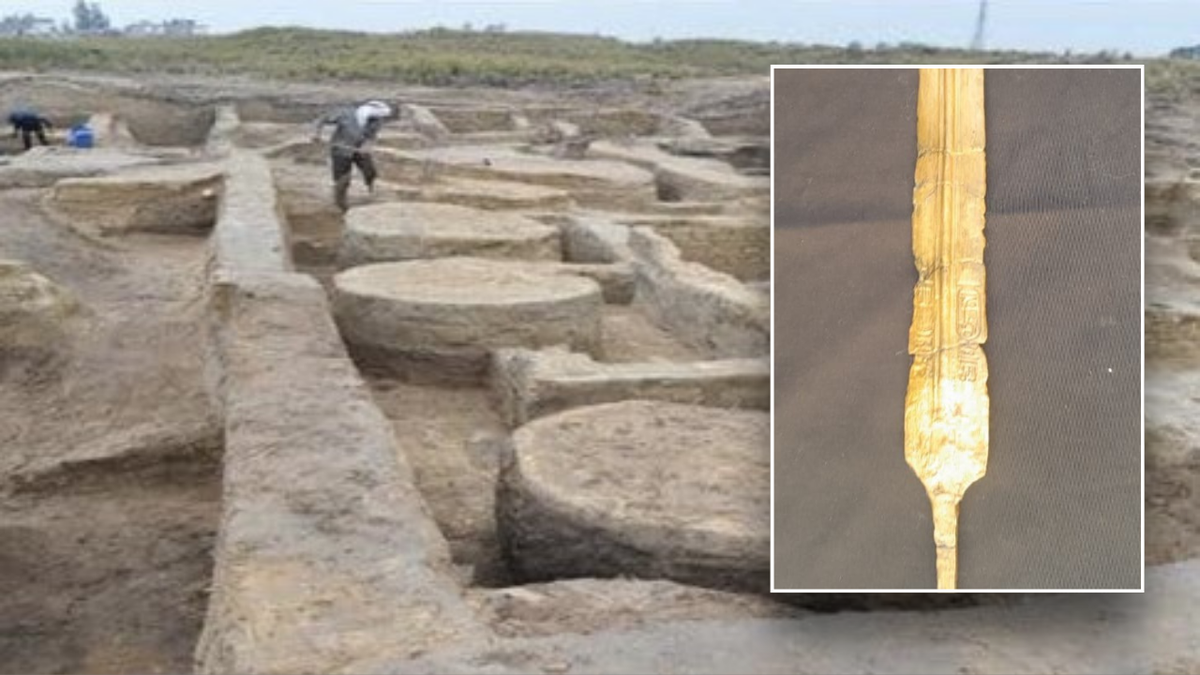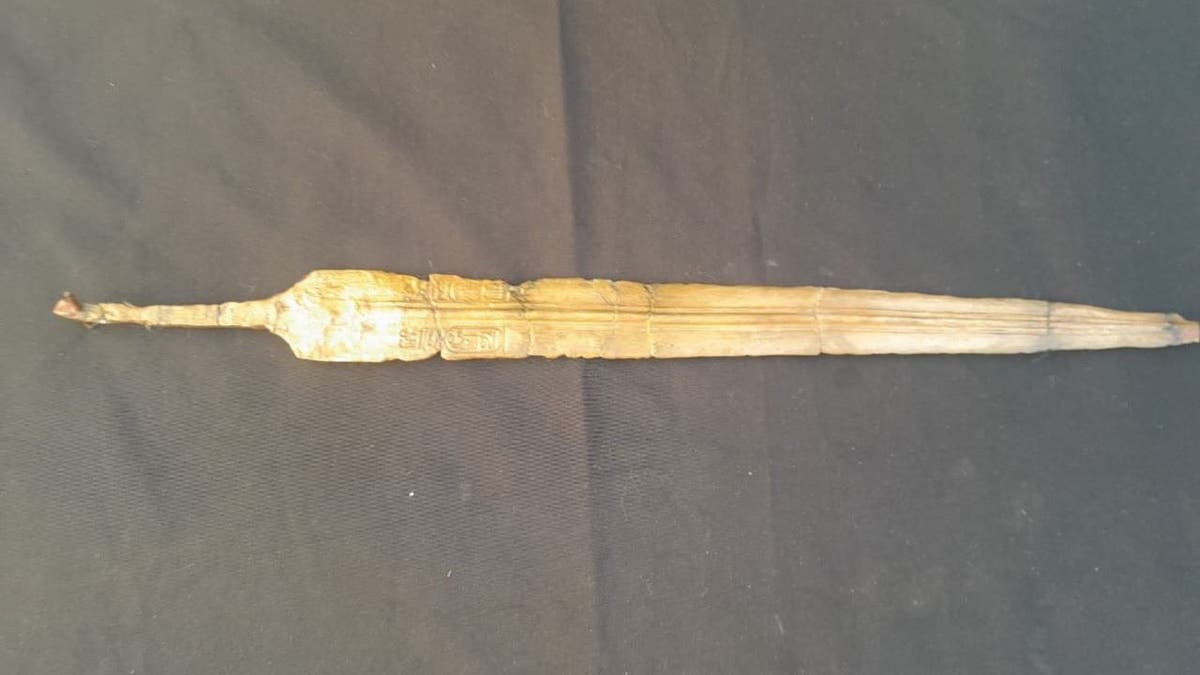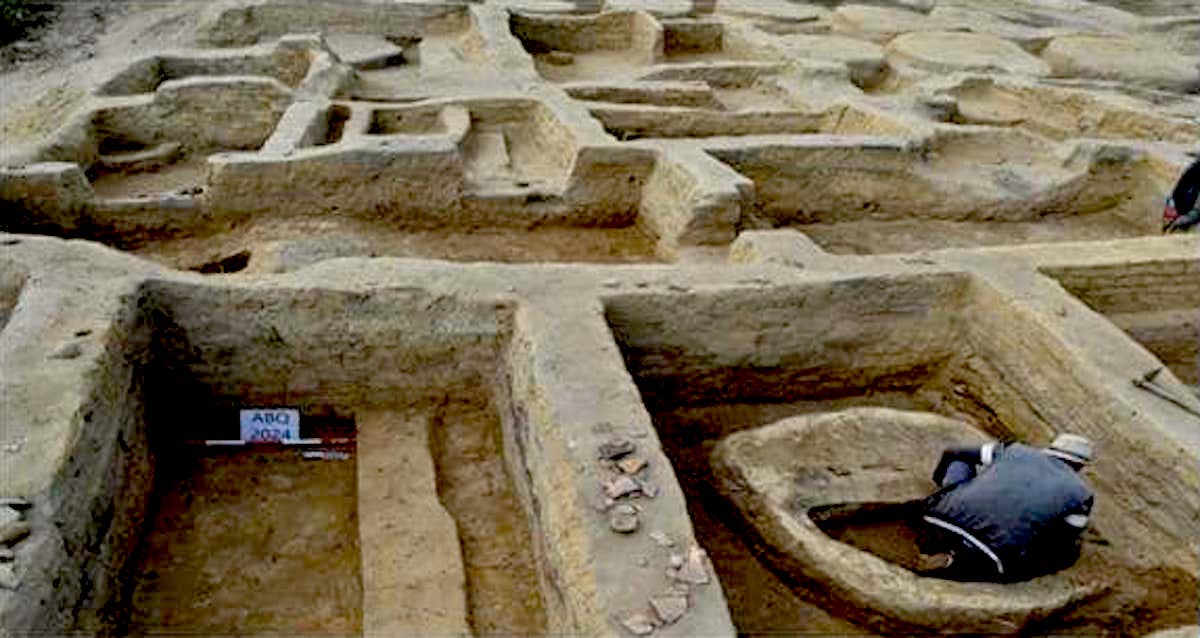The sword, which dates back 3,200 years, was found at a former fort

Egyptian archaeologists recently found an ancient sword belonging to the military of Ramesses II, the pharaoh that scholars believe was referenced in the Book of Exodus.
The Egyptian Ministry of Tourism and Antiquities announced the find in a press release on Sept. 5. The excavation took place in Housh Eissa, a city in the Beheira Governorate.

At the site, which is named Tell Al-Abqain, archaeologists found “a series of mudbrick architectural units, including military barracks for soldiers and storage rooms for weapons, food, and provisions from the New Kingdom era.”
One of the finds was a bronze sword with the cartouche, or hieroglyphic symbol, of Ramesses. A picture of the sword shows that the artifact has decayed over time, but has still retained the symbol of the Egyptian ruler.

A bronze sword from the time of Moses and the Book of Exodus was found during a recent dig in Egypt. (Egyptian Ministry of Tourism and Antiquities via Facebook)
“In addition to the barracks, numerous artifacts and personal items belonging to soldiers were unearthed,” the tourism ministry added. “[These] artifacts provide insight into the daily lives, religious beliefs, and military activities of the fort’s occupants.”
A range of relics were discovered, from weapons and tools to hygiene items and jewelry.

The sword, which bears the symbol of King Ramesses II, is over 3,000 years old. (Egyptian Ministry of Tourism and Antiquities via Facebook)
“These [findings] include weapons used in battle, hunting tools, personal adornments, and hygiene items, such as ivory kohl applicators, carnelian and faience beads, scarabs, and protective amulets,” Egyptian officials added.

Ramesses, whose name is also spelled Ramses, was born in 1303 B.C. and died in 1213 B.C. He is believed to be the pharaoh that ruled over Egypt in the Book of Exodus.

The artifacts were uncovered at the Tell Al-Abqain site in Beheira Governorate. (Egyptian Ministry of Tourism and Antiquities via Facebook)
According to biblical accounts, Moses led enslaved Israelites out of Egypt to the Desert of Paran. Although the Bible does not name the pharaoh who interacted with Moses in the Book of Exodus, most scholars believe that the text references Ramesses.
Dr. Mohamed Ismail Khaled, Secretary-General of the Supreme Council of Antiquities, said in the press release that the fort was historically important to Egypt and served as a key outpost. It protected Egyptian borders from the Sea Peoples, which consisted of several tribes that attacked Egypt.

Archaeologists say that the wide range of artifacts uncovered during the excavation reflect the social and religious lives of the soldiers who lived there. (Egyptian Ministry of Tourism and Antiquities via Facebook)
“[T]he architectural units are meticulously designed, divided into two identical groups separated by a narrow passage,” the press release explained. “This regular layout demonstrates the ingenuity of the ancient Egyptian engineers in adapting their surroundings to serve a variety of practical purposes.”